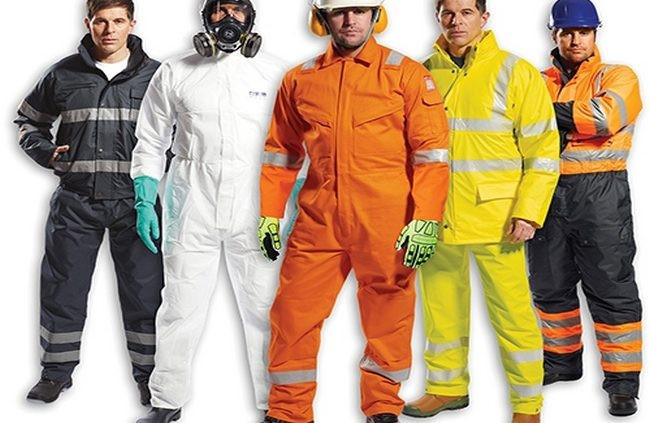Recently, the BGMEA and industry leaders are emphasizing on the increasing demand for non-cotton apparel, which showed a notable 78% surge in its share of total fiber production over the last five years.
The Bangladesh ready-made garments industry is currently facing tough competition from other leading exporters such as China, Vietnam, Italy, and Spain, which heavily contribute to non-cotton exports. Non-cotton apparel globally accounts for a 75% share of global exports.

In this perspective, we need to recognize the potential for market growth through diversification in the apparel sector. Currently, Bangladesh primarily exports low-cost items, but this segment is becoming saturated in mandatory exports. So for the steady growth of RMG industry, we need to diversify our apparel export basket.
Protective textile – a way to dynamic change for diversification
The future of clothing is getting focused on functionality, driven by advancements in technical textiles. Protective textiles play a crucial role in addressing potential life-threatening hazards, posing a danger to individuals that include heat, fire blasts, impact cuts and chemical splashes and dirt. These advancements make protective textiles more necessary and valuable.
According to an opinion shared by Abdullah Hil Rakib, Managing Director of team group, the global market for technical textiles is projected to reach $208.5 billion by 2024, up from $178.92 billion in 2020. The market is assumed to grow further to $298.1 billion by 2030. Europe currently represents the largest regional market for technical textiles, accounting for an estimated 28.8% share of the global total.
The technical textile market is projected to grow to $224.4 billion by 2025 at an average annual growth rate of 4.2%. Meanwhile, the global PPE market is projected to pass $93 billion by the end of 2025.
Overall market of protective textile is expanding to be utilized for oil and gas refining workers, civil defense, firefighting, and military personnel equipment where ballistic protection is essential. After Covid-19 medical textile has been led to grow. So, we can dive into the protective textile market to increase the benefits from those potential sources where we can increase demand.
The market where we can we grow
According to the US Bureau of Labor Statistics, work-related injuries and illnesses decreased to 2.8 incidents per 100 workers in 2019, down from about 10.9 incidents per 100 workers in 1972. This stats decline about the significance of need the protective equipment for safety concerns. In this perspective, US industry would choose to produce or import protective textile for necessity.
The most common industrial protective equipment are helmets, hardhats, respirators, dusk masks, safety gloves eyewear, ear protection, face shields, goggles, fall arrest systems, safety gloves, welding gloves, welding jackets, footwear and clothing. Bangladesh readymade garments industry can take steps to produce these items to unlock this potential market. The greatest competitive advantage in the technical textile sector is possessing a unique product based on proprietary technology, which comes after extensive investment in R&D and product development strategies.
The top 10 militaries in the world have around 30 million military personnel and at least 4-6 meters of fabrics are required per person per year.
The US Dept of Defense has keen interest in using natural fibers to develop next generation warfighter personal protective equipment. This necessity can be the right scope for diversification of manufacturers. Before starting this particular segment of production, the factories must upgrade technology and ensure right materials procurement.
Ballistic performance things for military protection have many diversified options where any industry can generate revenue by discovering functionality of protection. This area of equipment includes soft body armor, metal sheet, warp beam, protection shield etc. India has already embarked on this path with 13 industries producing ballistic performance shields using Aramid fibers.
Protective textiles compilation
Feasibility study titled “Scaling up the Production of Technical Textiles (TT) including Personal Protective Equipment (PPE) in Bangladesh” was conducted by Deutsche Gesellschaft für Internationale Zusammenarbeit (GIZ), a German-based organization. The study highlighted Bangladesh’s challenges in technical textile exports, attributing them to complexities in raw material sourcing and meeting testing or certification standards.
China and India have already established their presence in the advanced protective textile market. Compared to them, Bangladesh lags behind in adopting technology and ensuring a reliable supply chain for raw materials.
According to the feasibility study, factories are set to upgrade their technology and adopt lean manufacturing practices. Relevant departments will focus on securing suitable raw materials and ensuring high-quality production. Additionally, other departments will familiarize themselves with the requirements for meeting testing and certification standards.
The report highlighted, “Once manufacturers establish a dependable supply of materials, upgrade their operations, and master the required testing and certification procedures, significant opportunities for product diversification emerge.”
In this context, Bangladesh is a newcomer to the technical textile segment. By focusing on pre-protection services, there is an opportunity to enter a market that could become saturated and upgraded in the future global market. Introducing protective textiles could pave the way for product diversification and potentially increase demand.
















